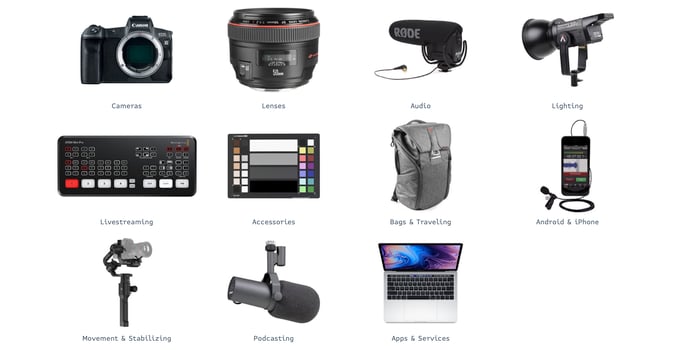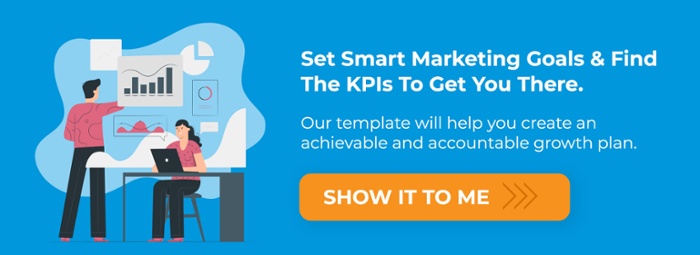
5 Must-Haves In Your Healthcare Marketing Plan in 2022
Patrick Dodge
Founder
Planes, trains, and trade shows. Remember those? How quickly marketing has changed.
Even though professional healthcare events are trying to stay alive by going virtual, the opportunity for business growth just isn't the same.
This presents a challenge and an opportunity for marketers planning for 2022.
With such a sizable chunk of the marketing budget no longer going to trade shows, healthcare marketing plans are taking an entirely different shape.
Now is the time for brands to put their dollars to work in tech, content, and research that have resulted in proven ROI. Here are five investments we recommend based on results we've seen with our clients.
1. Customer Resource Management (CRM)
If your healthcare company hasn’t implemented a quality CRM yet, this is hands-down the most important investment you can make in the next year.
A CRM enables your business to manage customer relationships and internal processes on a whole new level. It improves:
- Communication with leads and customers
- Support for established clients
- Data management and business analytics
- Sales processes and forecasting
A CRM offers many benefits, including the ability to segment contacts using shared characteristics and create lists for personalized communication.
It's a central hub where important information about your business contacts or patients can be stored. You will be able to quickly access all the information you need about anyone in your database.
This is not limited to data you’ve collected in forms. Some CRMs also track pages your contacts have viewed on your website, emails they’ve opened and clicked, and other behavioral insights that will help you qualify them.
2. Marketing & Sales Platforms
A marketing and sales platform enhances the benefits of a CRM, allowing you to channel insights about influenced leads directly into your contact database.
A marketing platform like HubSpot offers various tools to help you attract the right visitors to your website, convert them into leads, and guide them on their buyer’s journey.
Marketing automation platforms include tools like a blog, landing page templates, forms, social media tools, and chat flows that help you to manage all marketing activities in one place.
You can created dedicated campaigns around products and services and track the results in real-time.
This is important because marketers are often frustrated by the inability to prove their work is making the company money. For too many years, we’ve been forced to rely on disconnected tools that don’t talk to each other, trying to cobble together datea that proves ROI. Marketing automation platforms have made this finally possible.
Sales enablement platforms can also arm your team with tools to help them focus on the right prospects, build deeper relationships, and close deals faster. These features include time saving email templates, automated sequences, document storage, and advanced reporting for forecasting.
Related Content: How to Get Started With HubSpot Marketing Professional [FREE TEMPLATE]
3. Educational Content
You need to create and share quality educational content to grow your business. There are no short cuts.
As someone on the front lines of healthcare marketing for the last four years, I’ve seen first-hand how hungry practitioners are for information that will help them produce better outcomes for their patients.
If your company is B2B, you can use educational content not only for generating good prospects for sales, you can also use it to help your clients build relationships with their customers.
I’ll give you an example.
One of our clients specializes in producing dietary supplements for physicians and consumers. When we published a guide about the impact unmitigated stress has on hormones in the body, it not only drew the interest of doctors, it also gave us the option of creating a “co-brandable” version where doctors could put their name/logo on the guide and share it with their patients.
Teaching your clients is a great strategy. But helping them teach their own patient population is a HUGE win.
In a world filled with commoditized products and services, your brand will stand apart from all others by providing unique and valuable content your customers can use for their own marketing.
Related Content: HubSpot vs. Pardot: A Marketing Automation Comparison
4. Video Marketing Gear
Too many companies out there are still dragging their feet with video marketing. If your company is on that list, here are some things you should know:
A recent study from Wyzowl Research shared by HubSpot states almost 87-percent of marketers who use video in their marketing say it produces ROI for them. Only 33-percent of marketers felt that way in 2015.
Healthcare companies need to get in the game with video. It doesn’t necessarily have to break the bank either.
You can get started with a simple ring light, webcam or smartphone, and a good external microphone.
If you want to make a bigger investment in quality out of the gate, I’d recommend a good DSLR camera, a tripod, lightboxes, a lavalier or boom microphone, and an external hard drive to store your media. You will also need post-production editing tools like Final Cut Pro X or Adobe After Effects.

There are a ton of options for gear and editing software out there, and you can cut down on the research a lot by following an expert like Caleb Wojcik. He’s got a great section on his website that highlights recommended gear for all skill levels.
"Teaching your clients about what you do is a great strategy. But helping them teach their own patient population is a HUGE win."
5. Buyer Persona Research
When was the last time your company gathered fresh, reliable insights about how your buyers make decisions?
The pandemic has turned the healthcare industry on its head, changing certain aspects of marketing forever. If you haven’t invested in a study that shares how and why buyers are making the decisions they are, now is a good time to do that.
It’s important to note that when I refer to research, I do not mean surveys.
That approach does not tell you nearly as much as what you’ll get by conducting unscripted interviews with buyers that have no previous relationship with your brand.
When you can get the story from buyers in their own words, you’ve got honest, authentic insights about how your buyers are evaluating and purchasing solutions like you provide.
I highly recommend a persona research refresh every few years, just to keep your finger on the pulse of the market and stay one step ahead of your competition.
Trade shows are expensive. When you factor in the time and resources it takes to secure space at the events, fly or drive to each location, assemble your booth, and pay for lodging and meals -- the potential for a positive ROI was often a shaky proposition.
But now that in-person trade shows are off the table, companies can make efficient and meaningful investments into their healthcare marketing plans that are likely to pay dividends for years to come.
Dec 28, 2021 10:32:24 AM
